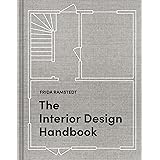Achieving a truly professional and aesthetically pleasing romantic furniture makeover requires a meticulous approach, blending artistic vision with precise technical application. The accompanying video expertly demonstrates Kacha’s refined technique in transforming a dresser with the exquisite new decoupage paper from Redesign With Prima, showcasing how these beautiful elements can elevate an ordinary piece into a captivating focal point.
Mastering Surface Preparation for Decoupage Furniture Transformation
The foundation of any successful furniture refinishing project, especially one incorporating decoupage, unequivocally lies in superior surface preparation. This initial phase dictates the adhesion, durability, and overall aesthetic integrity of your romantic furniture makeover. Inadequate preparation inevitably leads to premature peeling, cracking, or an uneven finish, compromising the entire artistic endeavor. Begin by thoroughly cleaning the dresser, removing all dirt, grime, and grease with a reliable degreasing cleaner. Even seemingly clean surfaces harbor contaminants that inhibit proper adhesion.
Following the deep clean, assess the existing finish. If the surface possesses a high-gloss lacquer or polyurethane, a light sanding with 220-grit sandpaper becomes imperative. This creates a mechanical tooth, providing the subsequent layers, including your chosen decoupage paper, something tangible to grip. For painted surfaces or raw wood, sanding might be less aggressive, but a smooth, uniform base remains critical for optimal decoupage application. Repair any imperfections such as chips, dents, or gouges using a high-quality wood filler, allowing it to cure completely before sanding smooth. A final wipe-down with a tack cloth or lint-free cloth ensures all dust particles are eradicated, preparing the canvas for its romantic transformation.
Selecting Decoupage Papers for a Cohesive Romantic Aesthetic
The choice of decoupage paper profoundly influences the “romantic” quality of your furniture makeover. Redesign With Prima offers an array of meticulously designed papers, perfect for imbuing pieces with vintage charm and sophisticated elegance. When curating your selection, consider the overall color palette and existing decor of the space where the dresser will reside. Soft pastels, muted florals, vintage botanical prints, or classic damask patterns inherently lend themselves to a romantic aesthetic. For example, a dresser destined for a farmhouse-chic bedroom might benefit from delicate rose patterns or script designs, while a piece in a neoclassical setting could feature elaborate scrollwork or classical motifs.
Think about the scale of the patterns in relation to the furniture piece itself. Large, bold prints might overwhelm a smaller dresser, whereas intricate, smaller patterns can add depth and interest without dominating the entire surface. Sometimes, combining complementary patterns—perhaps a larger floral on the drawer fronts and a subtle stripe on the side panels—creates a layered, rich visual narrative. This thoughtful integration of various Redesign Decoupage Paper designs ensures a cohesive and truly personalized romantic furniture transformation.
Advanced Techniques for Seamless Decoupage Application
Applying decoupage paper smoothly and without blemish requires both precision and patience. As Kacha adeptly demonstrates, a quality decoupage medium is indispensable, offering strong adhesion and a durable finish. Begin by applying a thin, even layer of decoupage medium to the furniture surface where the paper will be placed. Avoid excessive application, which can lead to bubbling or difficulty in smoothing. Carefully position your Redesign Decoupage Paper onto the wet medium, starting from one edge and gently pressing it down.
Working from the center outwards, use a soft brayer, a squeegee, or even your fingertips to meticulously smooth out any air bubbles or wrinkles. This step is critical; trapped air will create unsightly imperfections once the medium dries. For larger pieces, consider cutting your decoupage paper into manageable sections, overlapping them slightly where patterns align to create a seamless effect. Apply a thin coat of decoupage medium over the top of the paper, effectively sealing it and providing an initial layer of protection. This transparent layer not only secures the paper but also enhances the vibrancy of the print. Allow each layer to dry completely before proceeding to the next step, ensuring the integrity of your romantic furniture makeover.
Enhancing the Romantic Appeal: Painting and Distressing Techniques
Beyond the decoupage itself, the surrounding painted elements and finishing techniques are paramount in defining the romantic character of your transformed dresser. Chalk paints or mineral paints are often favored for their matte finish and excellent adhesion, providing a soft backdrop that complements delicate decoupage papers. Consider a muted color palette—think soft grays, antique whites, creams, or pale blues—to maintain that quintessential romantic allure. For instance, pairing a distressed cream paint with a floral decoupage paper creates an instant vintage feel, reminiscent of cherished heirlooms.
Distressing techniques further enhance this romantic, aged aesthetic. Once your paint and decoupage are fully cured, light sanding along edges, corners, and areas of natural wear can expose underlying wood or previous paint layers, imparting a beautifully weathered look. Sanding blocks with fine-grit sandpaper (e.g., 400-grit) allow for controlled distressing. Alternatively, for a truly authentic aged appearance, utilize a dark wax or glaze applied over the painted surfaces and lightly wiped back. This technique settles into crevices and details, deepening the romantic narrative of the piece and accentuating its unique character, turning a simple dresser into a compelling story of romantic furniture transformation.
The Crucial Step: Sealing and Protecting Your Decoupage Artistry
The final, indispensable step in any decoupage furniture makeover is applying a robust topcoat. This protective layer shields your intricate decoupage work and painted surfaces from daily wear, moisture, and UV damage, ensuring the longevity of your romantic furniture transformation. The choice of topcoat depends on the desired finish and the anticipated use of the piece. For a durable, satin finish that complements a vintage aesthetic, a water-based polyurethane or polycrylic is an excellent option. These products offer superior protection without yellowing over time, crucial for preserving the integrity of delicate colors in Redesign Decoupage Paper.
Apply the topcoat in thin, even layers using a high-quality synthetic brush or a foam applicator. Multiple thin coats are always preferable to a single thick one, which can lead to drips, brushstrokes, or an uneven cure. Allow each coat to dry thoroughly according to the manufacturer’s instructions, typically 2-4 hours, with a light sanding (220-400 grit) between coats for maximum smoothness and adhesion. For a truly professional, glass-like finish, aim for at least three to five coats, buffing lightly with very fine grit sandpaper or a rubbing compound after the final coat has fully cured. This diligent sealing process secures your romantic furniture makeover, guaranteeing its beauty endures for years to come.











